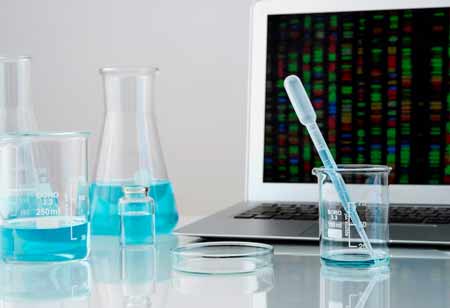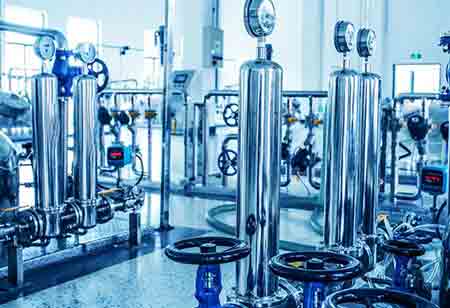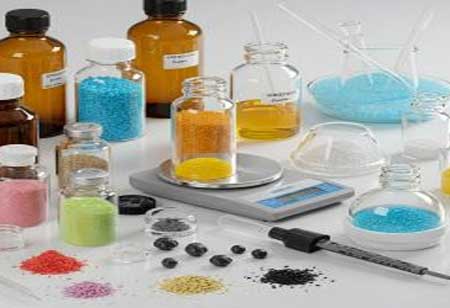Thank you for Subscribing to Chemical Industry Review Weekly Brief
Innovations Challenges and the Future of Aerospace Technology
Modern aerospace materials innovations are driven by performance, reliability and sustainability. Our team develops specific strategies to achieve differentiation in these areas.

By
Chemical Industry Review | Friday, October 25, 2024
Stay ahead of the industry with exclusive feature stories on the top companies, expert insights and the latest news delivered straight to your inbox. Subscribe today.
1. What strategies do you use to drive aerospace materials R&D projects toward achieving innovations that enhance aircraft performance?
Modern aerospace materials innovations are driven by performance, reliability and sustainability. Our team develops specific strategies to achieve differentiation in these areas.
We increase the performance by constantly innovating our product's chemistry, processing, and application. We leverage PPG’s technical breadth and depth to develop novel materials, as well as collaborate with academia and suppliers on the latest chemistry and analytical techniques.
To ensure reliability and product robustness, we apply sound statistical principles in the development and testing of materials. All new materials need to pass qualification testing with statistical confidence. In addition, we use relevant quality tools during new product introduction, including failure mode and effect analysis (FMEA), control plan, and advanced product quality planning (APQP).
In the area of sustainability, we now perform comprehensive sustainability assessments for all product development projects. Emphases are placed on removing and replacing hazardous raw materials, reducing our environmental footprint, like carbon emission and volatile organic compounds (VOC), and improving energy efficiency during our product's application and end-use phase. Through a disciplined stage-gate product development process, we introduce new and sustainably advantaged materials to enhance aircraft performance.
2. Can you share your experiences from successful aerospace materials' R&D projects that led to groundbreaking innovations or materials that are widely used in the industry?
Electrocoat, or electrodeposition coating, is a proven high-speed, high-performance corrosion protection technology for the automotive industry. PPG first developed automotive electrocoats in the 1970s and has since been a leader in electrocoat materials, coatings processes, and services.
By leveraging PPG’s know-how in electrocoat chemistry while addressing aerospace requirements, we developed the first aerospace electrocoat product, AEROCRON™. This product is a game changer in aerospace primers with outstanding sustainability benefits, including the absence of hexavalent chrome, low VOC, and an automated coating process.
Multiple aerospace OEM customers are now adopting Aerocron. To make this product successful, you need to use knowledge from various industries, understand aerospace needs and qualification processes, know chemistry to create special products for aerospace aluminum alloys and be skilled in the electrocoat process and equipment to provide a complete solution to customers.
3. What are some of the challenges and opportunities presented by lightweight materials, such as carbon-fiber composites, and their role in improving fuel efficiency in aviation?
Lightweighting is an important approach to improve aerospace fuel efficiency. Carbon fiber composites, with their high strength-to-weight ratio, are a key enabler for lightweight airframe structures. It also eliminates the need for corrosion-inhibiting coatings. However, many challenges remain before the wider adoption of carbon fiber composites. Composites for primary structures still require slow and energy-intense autoclave cures, which can limit the overall aircraft production rate. After curing, multiple steps of sanding and priming are needed to achieve an acceptable surface finish, again impacting productivity. Last but not least, unlike aluminum, carbon fiber composites cannot be effectively recycled and recovered today. Unless a breakthrough recycling process is realized, most composites will be incinerated or end up in landfills at end-of-life.
In addition to airframe structures, aerospace sealants, adhesives, and coatings also play a role in aircraft fuel efficiency. Low-density sealants and adhesives have been developed by introducing micro balloons. Balancing density and performance can be a difficult challenge. Materials with a high content of micro balloons and low density tend to have reduced mechanical strength and adhesion. Novel resin and formulation designs are required to achieve the optimum balance.
Coatings also play a role in overall aircraft weight. Airframe structures and components are typically coated with multiple layers of coatings to satisfy corrosion, adhesion, and aesthetic requirements. By enhancing the coating material's performance and functionality, the number of coating layers and/or layer thickness can be reduced, resulting in weight savings. Although conceptually desirable, this approach can be challenging as combining multiple functions (like corrosion protection and flexibility) into a single layer often leads to compromises in other performance attributes.
4. Any advice, suggestions, warnings, etc., you would give to professionals in your similar role working in other companies in the advancement of aerospace technology in terms of dos or don’ts?
Aerospace is a fast-growing market with stringent performance requirements. Continued material and process innovations are needed to fuel the growth of the aerospace industry. Aerospace companies need to focus on technology innovation and productivity improvement. They also need to leverage technology advancements in other industries, including novel materials, automation, digital tools, and data science.
Compared to many other industries, aerospace demands extreme reliability and an extended product lifecycle. Companies need to avoid short-term priorities that compromise long-term focus, inadequate risk management, and negligence in a fast-changing regulatory landscape.
5. Are there any emerging materials or innovations in aerospace materials R&D that have the potential to revolutionize electric propulsion technologies for aircraft, and why?
Electric propulsion has seen tremendous growth in recent years. Fully electric urban air mobility vehicles have been successfully demonstrated by many companies. Lithium (Li)-ion batteries typically power these vehicles and are capable of efficient short-distance travel. Even though these batteries are efficient and can be mass-produced, a thermal runaway event of Li-ion batteries is a critical risk for electric aircraft. Multiple materials innovations must be applied to ensure these aircraft's safety, such as battery fire protection, thermal interface, and insulation materials. An effective recycling process is also needed to enable recovery of the essential metals in the batteries. Steady progress is being made in these areas.
Nevertheless, medium and long-distance travel is still out of reach for electric aircraft because of the low energy density, or energy per unit weight, of current batteries. Present state-of-the-art Li-ion batteries have lower than 1/50 (one-fiftieth) energy density than jet fuel. Despite the higher energy conversion efficiency of electric motors compared to combustion engines, drastic improvements in battery energy density are necessary before long-range electric-powered travel can be realized. Concentrated research investments and efforts must be made to develop novel battery chemistry with higher energy density, low costs, and ease of manufacturing.








